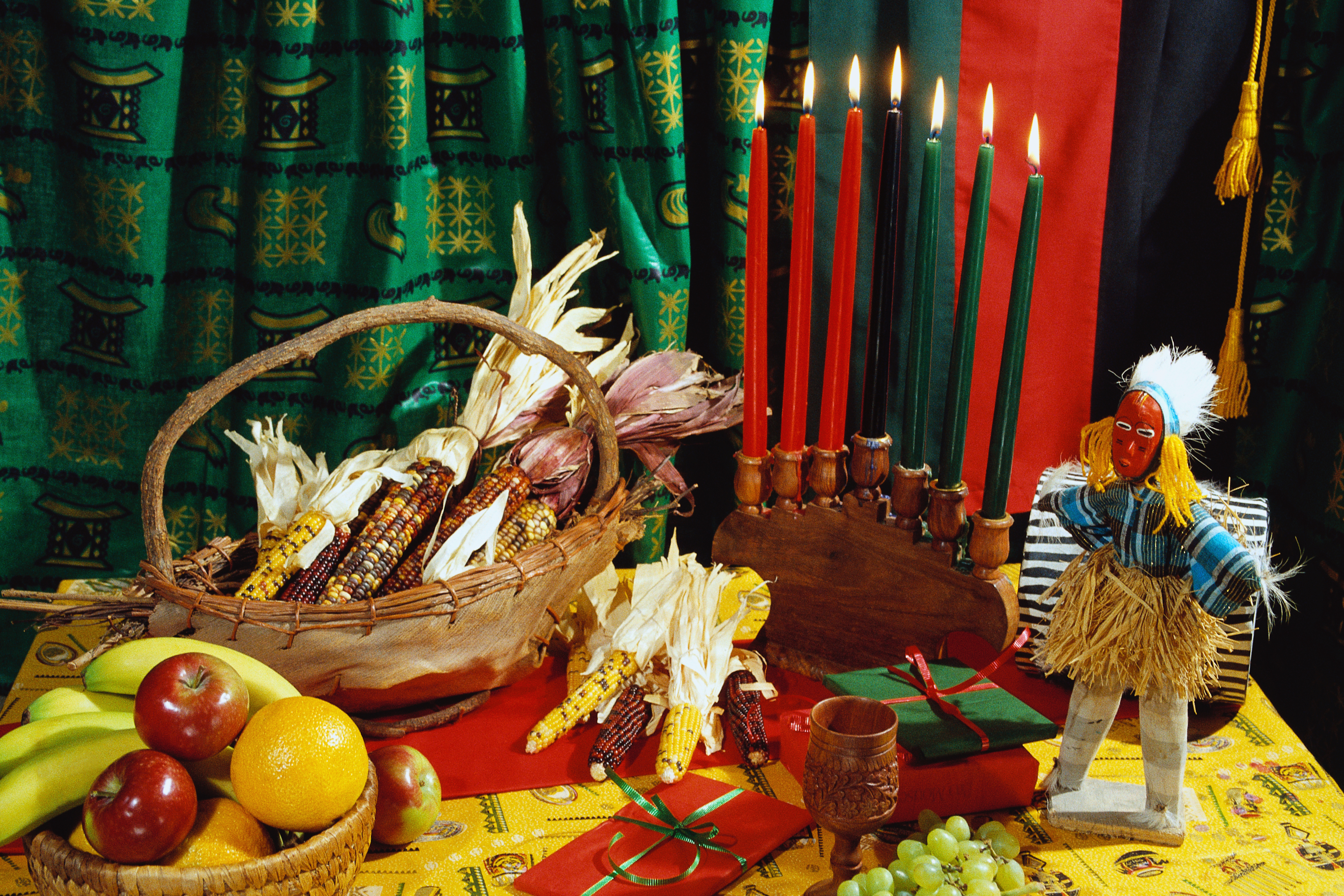Source: Guy Cali / Getty
Kwanzaa, an annual celebration of African culture spanning from Dec. 26 to Jan.1, originated in 1966 amid the Black Freedom Movement. The celebration was created by Dr. Maulana Karenga, an activist and esteemed professor of Africana studies at California State University, Long Beach. Rooted in the early harvest festivities of Africa, this holiday holds deep cultural significance for many African Americans and communities connected to the African diaspora. Kwanzaa derives from the phrase, “matunda ya kwanza,” in Swahili, which means “first fruits.”
The symbolic colors of Kwanzaa reflect the essence of unity and the historical roots of intercontinental Africans and their culture, according to The Official Kwanzaa website spearheaded by Karenga.
Every year, families light seven candles, which are also called mishumaa saba. They are placed on the Kinara — a candle holder — to celebrate the holiday. Each candle symbolizes a unique aspect of the African heritage. The black candle, which is always placed in the middle of the kinara, signifies the African diaspora, the three red candles embody their enduring struggle, while the green candles — also grouped in three — represent hope and the promise of a brighter future arising from the diaspora’s resilience.
During an interview with Belief Net in 2020, Karenga spoke about the significance of celebrating the holiday.
“Kwanzaa is a time of ingathering of the people to reaffirm the bonds between them; a time of special reverence for the Creator, in thanks and respect for the blessings, bountifulness and beauty of creation,” he said. “A time of commemoration of the past in pursuit of its lessons and in honor of its models of excellence, our ancestors; a time of recommitment to our highest cultural ideals in our ongoing efforts to be the best of what it means to be both African and human in the fullest sense.”
Kwanzaa brings people together to reflect on shared values, history and future goals. Whether you’re new to Kwanzaa or a seasoned celebrant, here’s a guide to embracing and honoring this meaningful holiday.
How do you celebrate Kwanzaa?
During the unique holiday, families organize activities centered around Nguzo Saba or the seven principles. According to Karenga, the seven principles are umoja (unity), kujichagulia (self-determination), ujima (collective work and responsibility), ujamaa (cooperative economics), nia (purpose), kuumba (creativity) and imani (faith).
One candle on the kinara is lit each day as families gather around the dinner table to discuss and reflect on one of the seven principles and how they can be applied in daily life. In addition to the kinara and candles, five more symbols are associated with the celebration. The Mkeka (mat) is symbolic of tradition and foundation. Fruits or mazao (crops), are served throughout the holiday to pay homage to the African harvest and the rewards of productive and collective labor.
The muhindi (corn) is symbolic of children and the future while the kikombe cha umoja (unity cup) represents the practice of unity. Gifts, also known as zawadi, are given to family members.
The Karamu feast is a significant and joyous part of the week-long celebration of Kwanzaa.
“Karamu” means “feast” in Swahili, and it typically takes place on Dec. 31, the sixth day of Kwanzaa. This gathering serves as a communal celebration, bringing family, friends and community members together to share in a meal and cultural festivities.
During the Karamu feast, participants come together to honor African culinary traditions by preparing and enjoying a lavish meal around the kinara. The menu often features a variety of dishes influenced by African cuisine, including flavorful stews, rice dishes, vegetables, fruits and other traditional foods. These dishes symbolize unity, cooperation and the bountiful harvest.
Beyond the food, the Karamu feast includes various cultural elements such as music, dancing, storytelling and poetry readings. These activities serve to connect participants with their African heritage, fostering a sense of pride and unity among those present.
Kwanzaa serves as a time of reflection, appreciation and commitment to collective progress. It’s an opportunity to honor the past, celebrate the present and envision a brighter future guided by unity, purpose and cultural pride.
This Kwanzaa, may the celebration of heritage and unity bring warmth, joy and inspiration to your life and those around you.
Happy Kwanzaa!
SEE ALSO:
The Black Seminoles: How Fugitive Slaves Escaped To Mexico Before The Civil War
What Was Christmas Like For Slaves In America?
The post A Complete Guide To Celebrating Kwanzaa appeared first on NewsOne.
The post A Complete Guide To Celebrating Kwanzaa appeared first on Black America Web.

